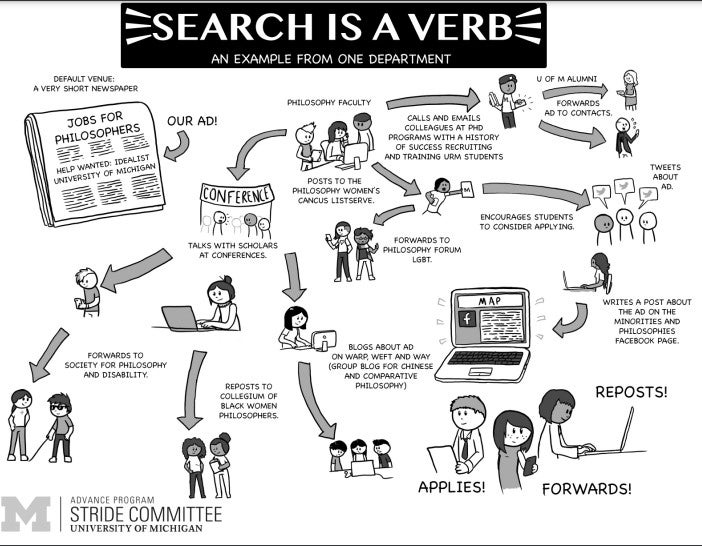Equity and Inclusion Leadership Toolkit: Faculty Recruitment and Hiring

Search is a Verb – ADVANCE Program STRIDE Committee University of Michigan
Having a diverse and inclusive faculty is associated with the following evidence-based benefits: increased student success overall, improved graduation rates, increased sense of belonging among minoritized students, and increased scientific impact. Recruiting diverse faculty requires intentionality cultivating diverse professional networks including minority caucuses within professional organizations, building pipelines with top graduate degree producers by race/ethnicity and gender, producing search ads that are attractive to a diverse candidate pool, and executing a search in a way that minimizes search bias.
Building Networks and Pipelines
- Diverse Issues in Higher Education, Top 100 Undergraduate and Graduate Degree Producers
- Forbes, Top STEM Schools for Women
Faculty Search Best Practices and Handbooks
- Search Recommendations for Chairs and Directors – before, during, and after a search (University of Michigan). Also so the Handbook for Faculty Searches and Hiring – composing the committee, defining the position, considering dual career hires, reviewing the national pool, cultivating the pool, active recruitment, fair review of applications, evaluation tools, negotiation, new faculty induction.
- Searching for Excellence and Diversity – a Guide for Search Committees (University of Wisconsin-Madison) – search committee operations, recruitment, bias, fair review of applicants, interviews, attracting the candidate of choice. Also learn how to review applicants: Research on Bias and Assumptions.
- Handbook of Best Practices for Faculty Searches (University of Washington) – scouting, preparation including for cluster hires, outreach, assessment, recruitment, retention.
- Best Practices for Conducting Faculty Searches (Harvard University) – running an effective search.